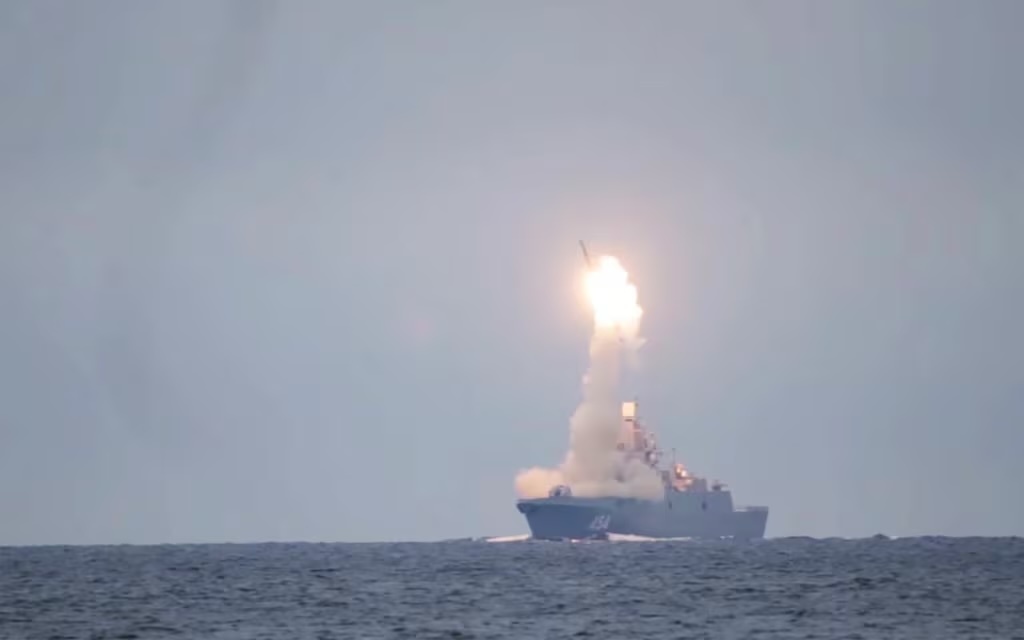15.11.2024

Russia conducted a hypersonic missile test in the White Sea Oct. 7, 2020. Credit: Russian Defense Ministry Press Service
Imagine a future where global travel takes mere hours. Where a flight from New York to Tokyo is faster than watching a movie. This is the promise of hypersonics: speeds over 3,800 miles per hour (Mach 5) that could transform commercial travel, defense and space exploration. And more urgently, with emerging threats from countries like China, Russia and Iran — the latter of which claims to have used hypersonic missiles in its October 1, 2024, attack on Israel — advancing hypersonic technology has never been more vital.
With oppressive regimes racing ahead in hypersonic technology, the United States can no longer approach hypersonics as “business as usual.” To stay competitive, NASA must bring the private sector into its hypersonic development plans, expanding on successful public-private partnerships like those the Department of Defense has fostered with companies such as Stratolaunch, which is based at Mojave Air and Space Port in my district. At Mojave, I have seen firsthand how these government partnerships with our innovative private industry can accelerate technological breakthroughs and produce cutting-edge capabilities, simultaneously advancing scientific research and strengthening American national security goals. Now, a similar approach to hypersonics must be taken within NASA to complement the DoD’s work with the industry, creating a whole-of-government strategy that leverages NASA’s research and exploration goals alongside DoD’s priorities. That is why I introduced authorization for the Making Advancements in Commercial Hypersonics (MACH) program in an amendment to the bipartisan NASA Reauthorization Act of 2024, which overwhelmingly passed the U.S. House of Representatives on September 23. If it becomes law, this bill could build a bridge to connect NASA and the booming commercial hypersonics industry, unlocking this bold vision for the future.
NASA, through the MACH program, must capitalize on existing government infrastructure to amplify an existing, robust private sector that is already fostering rapid advancements in hypersonic technology. NASA can focus on what it does best—pushing the boundaries of science and exploration — while private industry continues to develop the systems and technologies that make hypersonic flight a reality. At NASA Armstrong Flight Research Center, the Flight Opportunities Program has proven how impactful this model can be. In Fiscal Year 2023, NASA tested 31 payloads in flight and purchased 20 flights from six commercial providers. The technology being tested ranges from communications systems that help firefighters during wildfire season to technology that will be used for future lunar missions. These partnerships are not only beneficial for NASA, but they also have real-world impacts on areas in the American West, where we face intense wildfires each summer. Bringing this kind of collaboration to hypersonics would open up countless opportunities to benefit our communities.
The MACH program builds on this success by establishing a formal structure for NASA to fly its payloads on commercial hypersonic flights. These flight tests, more than wind tunnels and simulations, will offer real-world data under actual conditions. At the aerospace hubs in my district like NASA Armstrong Flight Research Center, Edwards Air Force Base — where historic flight tests have taken place — and Mojave Air and Space Port, we’ve seen firsthand how flight testing can drive innovation. These facilities have a long legacy of advancing aerospace technology through the use of flight tests, from breaking the sound barrier with the Bell X-1 to the development of commercial reusable hypersonic test vehicles today.
By fully embracing the commercial hypersonics industry, NASA can continue to push the envelope of what’s possible. The MACH program lays the groundwork for this partnership. With bipartisan support and growing urgency, this legislation isn’t just a policy — it’s a launchpad. NASA, working hand in hand with the private sector, has the power to shape the skies of tomorrow. America will break new barriers with innovation and development of the next generation of hypersonic technologies, carrying our legacy forward at a speed the world has never seen.
Vince Fong was elected to serve in the United States House of Representatives on May 21, 2024. He represents with great pride the 20th Congressional District of California, which encompasses parts of Fresno, Kern, Kings, and Tulare counties. In Congress, Vince was appointed to the Transportation and Infrastructure Committee and the Science, Space, and Technology Committee.
Quelle: SN
